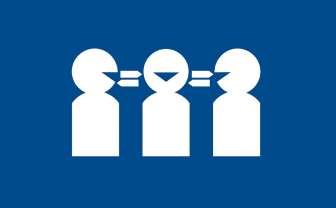Hepatitis C is one of several viruses that affects your liver and causes inflammation. Hepatitis C is curable. If it’s not treated, it can cause long term damage to your liver and may lead to liver cancer. Less than 10% of people with the virus will feel unwell or have any symptoms.1 This means they may not know if they have the virus.
Hepatitis C can be acute (short term) or chronic (long term).
Acute hepatitis C
Acute hepatitis C is when the virus affects you for less than six months. During this time levels of the virus in the blood rise until your immune system starts to make antibodies (proteins that fight foreign substances in your body). Antibodies are made in response to the presence of the hepatitis C virus. Around 25% of people will get rid of the virus this way.1
Key Concept:
Unlike antibodies to other diseases, such as hepatitis A and hepatitis B, hepatitis C antibodies do not provide any immunity to hepatitis C. That means if you contracted hepatitis C once and cleared the virus, you can still get the virus again.
Chronic hepatitis C
If you have the virus for more than six months, it’s called chronic hepatitis C. For most people, hepatitis C is a slow acting virus that can be managed in different ways. It can take many years from contracting the virus before any permanent damage to the liver (such as scarring) occurs. The impact of hepatitis C and how severe it is will vary over time and will be different for each person.
There is no way to predict how the virus will affect each person or how long it will take for liver damage to develop. Generally, the damage caused by the hepatitis C virus will increase as time goes on. However, this will not apply to everyone.
In Australia, hepatitis C is a notifiable disease. This means that health authorities must be notified if you have the virus. However, this can be tricky if you have no symptoms and are unaware you have the virus. Your hepatitis C status will not be shared with anyone else.
Common FAQs
Are there different types of hepatitis C?
There are several different strains of the hepatitis C virus called ‘genotypes.’ However, hepatitis C genotyping is no longer needed for curing hepatitis C. New treatments for Hepatitis C are very effective. Most people can get a prescription from their doctor to cure hepatitis C.
How common is hepatitis C in Australia?
At the end of 2022 around 74,400 people in Australia were living with chronic hepatitis C and 6,728 people were newly diagnosed.2 Rates of hepatitis C are decreasing over the general population due to effective treatments which also help reduce transmission.
How do you get hepatitis C?
The hepatitis C virus is a blood-borne virus. That means it’s passed from person to person through blood. In Australia, most cases of hepatitis C transmission occur using non-sterile, or previously used needles and the reuse of injection equipment. This can occur through the sharing of needles, tourniquets, injection water and injectable drugs.3 You can also contract the hepatitis C virus if through tattoo or body piercing practices at home or parlours that do not use clean needles, getting a needlestick injury, or through some sexual practices.
There’s a 5% chance that a mother with hepatitis C will transmit the virus to her baby during birth.4
How serious is the hepatitis C virus?
About three in four people who are exposed to hepatitis C virus will develop chronic hepatitis C.
If hepatitis C is not treated, you can develop serious liver disease such as fibrosis (scarring on the liver), cirrhosis (scarring of the liver that causes it to stop working properly), liver failure and cancer. Around 20% – 30% of people with chronic hepatitis C will develop cirrhosis, around 20-30 years after initially contracting the virus.5
For most people, hepatitis C does not result in serious disease or death. However, many factors will influence how each person experiences hepatitis C. These include:
- gender
- genetics
- health history
- diet
- where they live (including custodial settings)
- culturally and linguistically diverse background
- age when they contracted the virus
- stress levels
- alcohol and drug intake (including prescribed drugs)
Can hepatitis C be treated?
The good news is that hepatitis C can be treated. More than 95% of people with hepatitis C can be cured with medication.6
Can hepatitis C be prevented?
There is no vaccine for hepatitis C. The best way to prevent contracting the virus is to avoid situations where someone else’s blood may come into contact with yours. This is also known as being blood aware.
Elimination of hepatitis C
Australia is working towards eliminating hepatitis C as a public health concern by 2030. This is in line with global targets set by the World Health Organization and targets in Australia’s National Hepatitis C Strategy 2018 – 2022.






